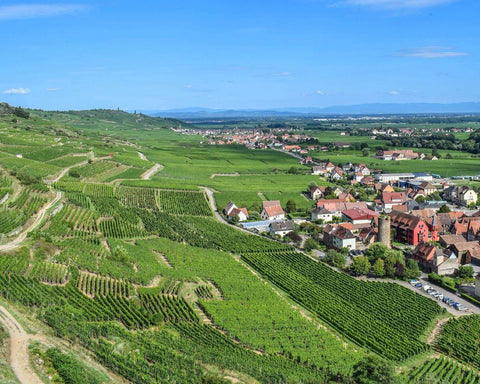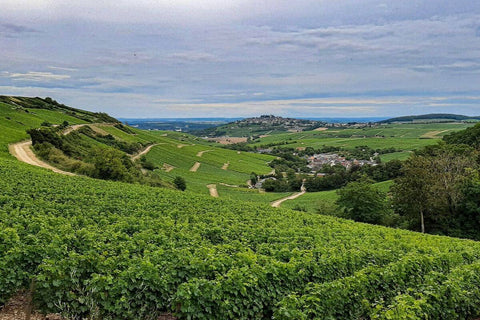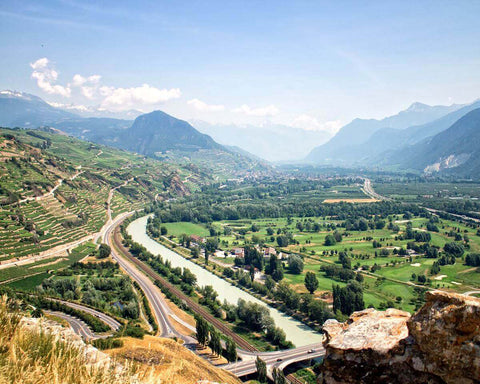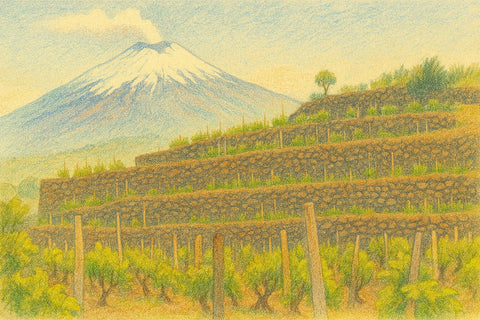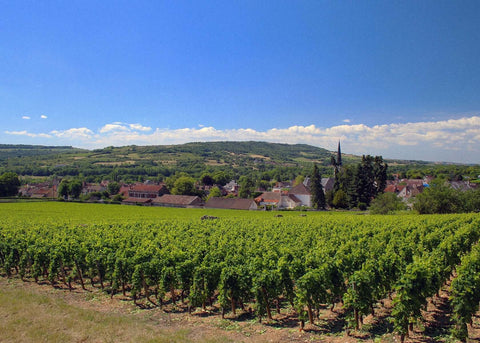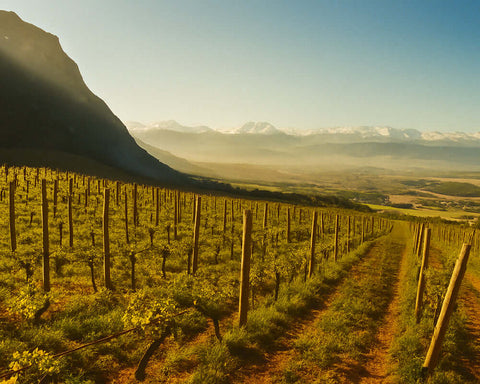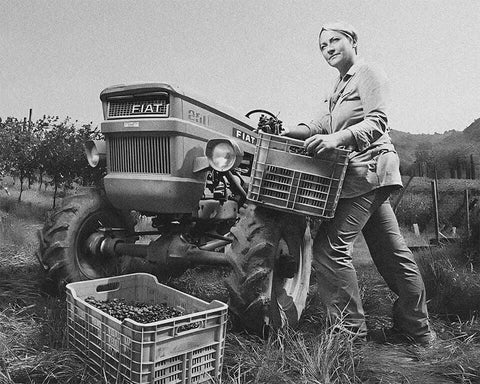Alsace, nestled in the northeastern corner of France, is one of the country's most exciting wine regions. Bordered by the Vosges Mountains to the west and the Rhine River to the east, this picturesque area is celebrated for its unique and aromatic white wines that embody the region's exceptional terroir and winemaking tradition.
Over the centuries, Alsace has developed a reputation for producing some of the world's finest white wines, mirroring its diverse terroir – especially evident in its renowned Riesling and Gewurztraminer wines.
The wines of Alsace, particularly its varietal whites, are celebrated for their purity, complexity, and ability to pair seamlessly with a wide array of cuisines, making them favorites among wine enthusiasts worldwide.
Table of Contents
History of Alsace
Alsace, located on the border between France and Germany, has always been strategically important, both geopolitically and viticulturally. Its history is a rich tapestry of cultural influences, from the Celts and Romans to the Franks and Alemanni, who all recognized the region's potential for wine production.
Alsace has experienced numerous political and cultural shifts over the centuries, often changing hands between France and Germany. Despite these changes, one constant has remained: Alsace's unwavering commitment to producing exceptional wines, a tradition passed down through generations.
The history of winemaking in Alsace dates back to the Roman era, with archaeological evidence suggesting that viticulture was well-established in the region by the 2nd century AD. The Romans introduced advanced winemaking techniques and expanded the vineyards, laying the groundwork for Alsace's future as a major wine-producing area.
Following the fall of the Roman Empire, monastic orders played a crucial role in preserving and advancing viticulture in Alsace. Monasteries became centers of agricultural knowledge, and monks meticulously maintained vineyards and documented their winemaking practices, ensuring the continuation of viticultural traditions.
During the medieval period, Alsace's wines gained recognition and prestige, particularly among the nobility and clergy. The region's strategic location along major trade routes facilitated the export of its wines to other parts of Europe, further enhancing its reputation.
The Renaissance marked a turning point in Alsace's winemaking history. During this time, the region's distinctive grape varieties, such as Riesling and Gewurztraminer, began to gain prominence. The development of these varietals, combined with the region's unique terroir, led to producing wines with remarkable character and complexity.
The 19th and 20th centuries were periods of both challenge and innovation for Alsace's wine industry. The region faced the devastating impact of phylloxera, a vine-killing pest that ravaged European vineyards. In response, Alsace undertook extensive replanting efforts, often using grafted rootstocks resistant to phylloxera, which eventually allowed the region to recover and continue its winemaking traditions.
The early 20th century saw Alsace caught in the turmoil of two World Wars, significantly impacting its viticulture. Despite these challenges, the resilience of Alsace's winemakers shone through as they worked to rebuild and rejuvenate their vineyards. The post-war period began a renaissance for Alsace wines, with a renewed focus on quality and innovation.
In recent decades, Alsace has firmly established itself as one of the world's premier wine regions. The introduction of the AOC (Appellation d'Origine Contrôlée) system in the 1960s helped protect and promote the region's wines. Alsace's commitment to quality, combined with its unique terroir, has earned it a place among the elite wine-producing areas of the world.
Terroir of Alsace
The region enjoys a semi-continental climate, with warm summers and cold winters, moderated by the protective influence of the Vosges Mountains. The varied topography of Alsace, with its mix of rolling hills and river valleys, provides an optimal setting for vineyards, ensuring ample sunlight and drainage. The soil composition is incredibly diverse, ranging from granite and schist to limestone and clay, each imparting distinct characteristics to the wines.
This diverse terroir supports the cultivation of a wide range of grape varieties, each expressing a unique facet of the region's multifaceted character.
The Geology of Alsace
Alsace's landscape predominantly comprises rolling hills, with elevations ranging from 200 to 400 meters above sea level. The region is divided into several sub-regions, each with unique geological characteristics influencing the wine's style and quality.
- Vosges Foothills: Known for its granite and schist soils, this area provides excellent drainage and mineral content, essential for producing high-quality grapes. The Grand Cru vineyards, located on the steep slopes of the Vosges, are renowned for their complex and age-worthy wines.
- Upper Rhine Plain: Characterized by alluvial soils with a mix of clay, limestone, and sand, the upper Rhine plain produces wines with a distinct fruitiness and freshness.
The region's geological diversity ensures that each sub-region can cultivate grapes that best match its soil type, enhancing the wines' expression and complexity.
Climate and Its Influence
Alsace's climate is semi-continental, characterized by warm summers and cold winters, with significant temperature variation between day and night. This diurnal range is crucial for grape ripening, allowing the development of sugars during the day and preserving acidity at night. The region's microclimates, influenced by the Vosges Mountains and the Rhine River, further contribute to the distinctiveness of Alsace wines.
The Grapes of Alsace
Alsace is primarily known for its white grape varieties, which thrive in the region's diverse terroir. The most notable grapes are Riesling, Gewurztraminer, Pinot Gris, and Muscat.
White Grape Varietals
- Riesling: The cornerstone of Alsace's most celebrated wines, Riesling produces aromatic and complex wines with high acidity and excellent aging potential.
- Gewurztraminer: Known for its aromatic intensity and exotic flavors, Gewurztraminer produces rich and spicy wines that are often enjoyed with Asian cuisine and strong cheeses.
- Pinot Gris: Produces full-bodied, aromatic wines with a rich texture and notes of ripe fruit and honey.
- Muscat: Known for its intensely aromatic and floral wines, often enjoyed as an aperitif or with light desserts.
Red Grape Varietals
- Pinot Noir: The primary red grape of Alsace, producing light, fruity wines with bright acidity and red berry flavors.
Top Wines of Alsace
Alsace Riesling: Often regarded as one of the world's finest expressions of the Riesling grape, Alsace Riesling is marked by its high acidity, mineral complexity, and remarkable aging potential. These wines range from dry to off-dry and are known for their citrus, apple, and floral aromas.
Gewurztraminer: Alsace Gewurztraminer is celebrated for its intense aromatics and rich, spicy flavors. These wines are typically full-bodied with notes of lychee, rose petals, and exotic spices, making them perfect for flavorful dishes and strong cheeses.
Pinot Gris: Alsace Pinot Gris produces full-bodied wines with a rich texture and flavors of ripe fruit, honey, and spice. These wines can range from dry to sweet and are known for their versatility in food pairings.
Muscat: Alsace Muscat is prized for its intensely aromatic and floral character. These wines are often enjoyed as an aperitif or with light desserts, offering a delightful balance of sweetness and freshness.
Cuisine and Typical Products of Alsace
Alsace's culinary traditions are deeply intertwined with its wine culture, offering a rich array of dishes that complement the region's aromatic wines. The cuisine of Alsace has hearty, rustic dishes that highlight local ingredients and traditional cooking methods.
Alsace Antipasti
Meals in Alsace often begin with a selection of antipasti, showcasing the region's diverse flavors and setting the stage for future courses. A typical antipasti spread might include:
- Foie Gras: A delicacy made from the liver of a specially fattened duck or goose, often served with a fruit compote and crusty bread.
- Tarte Flambée: A thin, crispy tart topped with crème fraîche, onions, and bacon, similar to a flatbread pizza.
- Choucroute Garnie: A hearty dish of sauerkraut cooked with sausages, pork, and potatoes, reflecting the region's Germanic influences.
- Quiche Lorraine: A savory tart filled with a mixture of eggs, cream, and bacon or ham, showcasing the region's love for rich, flavorful dishes.
Alsace First Courses
The first course in an Alsace meal often features soups, tarts, and other hearty dishes that highlight the region's grains and seasonal vegetables.
- Soupe à l'Oignon: A rich onion soup topped with a crusty bread slice and melted Gruyère cheese. It's a comforting dish that pairs well with Alsace wines.
- Quiche aux Poireaux: A savory tart filled with leeks and a creamy egg mixture, reflecting the region's love for hearty and flavorful dishes.
- Baeckeoffe: A traditional Alsace casserole made with marinated meats, potatoes, and onions, slow-cooked in a white wine broth.
- Tarte à l'Oignon: An onion tart made with a buttery pastry crust and a savory onion filling, often enjoyed as a starter or light meal.
Alsace Second Courses
Alsace is known for its high-quality meats, particularly pork, and game, often prepared in traditional, rustic dishes that highlight the region's culinary heritage.
- Choucroute Garnie: A classic Alsace dish of sauerkraut cooked with an assortment of sausages, smoked pork, and potatoes, often served with mustard.
- Coq au Riesling: A variation of the classic Coq au Vin, made with chicken braised in Riesling wine, mushrooms, and cream.
- Civet de Lièvre: A hearty hare stew made with red wine, onions, and herbs, reflecting the region's tradition of game dishes.
- Escalope de Veau à la Crème: Veal escalopes cooked in a creamy mushroom sauce, often served with noodles or rice.
Alsace Side Dishes
Alsace cuisine includes a variety of vegetable-based side dishes that complement the region's main courses and highlight the local produce.
- Gratin Dauphinois: A creamy potato gratin made with thinly sliced potatoes, cream, and garlic, baked until golden and tender.
- Haricots Verts Amandine: Green beans sautéed with butter and almonds, offering a simple yet flavorful accompaniment to meat dishes.
- Choucroute: A traditional side of sauerkraut, often flavored with juniper berries and white wine.
- Pommes de Terre Sarladaises: Sliced potatoes sautéed in duck fat with garlic and parsley, a rich and savory side dish.
Alsace Fromages (Cheeses)
Alsace produces several renowned cheeses that are often enjoyed at the end of a meal, paired with local wines.
- Munster: A soft, washed-rind cheese made from cow's milk, known for its strong aroma and rich, tangy flavor.
- Tomme d'Alsace: A semi-soft cheese with a mild flavor and creamy texture, often enjoyed with a glass of white wine.
- Bargkass: A firm, cow's milk cheese with a nutty flavor produced in the high pastures of the Vosges Mountains.
- Ribeaupierre: A soft cheese with a washed rind, known for its creamy texture and robust flavor.
Alsace Desserts
Desserts in Alsace often feature local fruits, nuts, and spices, providing a sweet conclusion to a meal.
- Kugelhopf: A traditional Alsace cake made with yeast dough, raisins, and almonds, often flavored with a touch of brandy or kirsch.
- Tarte aux Myrtilles: A blueberry tart made with a buttery pastry crust and a sweet blueberry filling, often enjoyed with a dollop of whipped cream.
- Pain d'Épices: A spiced honey cake, often served with a slice of blue cheese or a dollop of crème fraîche.
- Bredele: Traditional Alsace Christmas cookies, made in a variety of shapes and flavors, including almond, cinnamon, and anise.
Typical Products of Alsace
Alsace's cuisine hinged on high-quality local products, many of which have achieved protected status, ensuring authenticity and traditional production methods.
Charcuterie
Alsace is known for its exceptional charcuterie, with local butchers and artisans producing a wide variety of cured meats and sausages.
- Jambon d'Alsace: A dry-cured ham produced in the region, known for its delicate flavor and firm texture.
- Saucisse de Strasbourg: A smoked sausage made from pork, seasoned with garlic and spices, and often enjoyed with sauerkraut.
- Terrine de Gibier: A game terrine made with a mixture of wild meats, herbs, and spices, reflecting the region's hunting traditions.
- Saucisson Sec: A dry-cured sausage that is a staple in Alsace cuisine, perfect for picnics and casual meals.
Vegetables and Fruits
Alsace's varied climate allows for the cultivation of a wide range of produce, which features prominently in local cuisine.
- Choucroute: Fermented cabbage, often used in the region's signature dish, choucroute garnie.
- Asperges d'Alsace: White asparagus grown in the region, known for its tender texture and delicate flavor.
- Mirabelles de Lorraine: Small, yellow plums that are used in tarts, preserves, and brandies.
- Cerises d'Alsace: Cherries grown in the region, often used in desserts and preserves.

